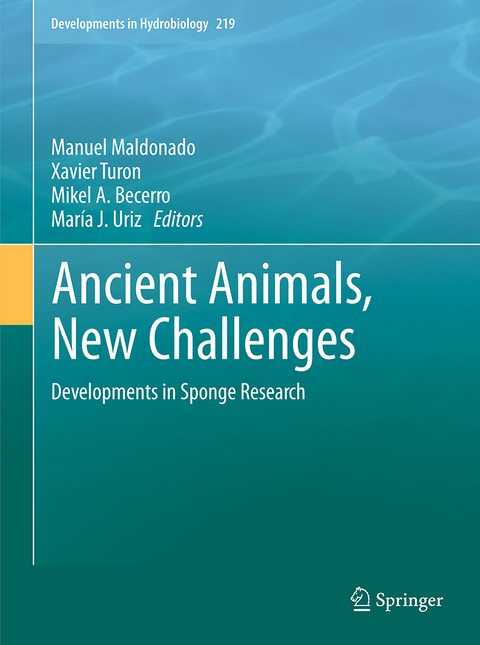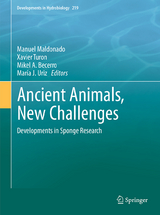Ancient Animals, New Challenges
Previously published in Hydrobiologia, vol. 687, 2012
1. No longer Demospongiae.- 2. Molecular phylogeny of glass sponges.- 3. Phylogenetic reconstruction of Polymastiidae based on morphology.- 4. First evidence of miniature transposable elements in sponges.- 5. The mitochondrial genome of stygobitic sponge Eunapius subterraneus.- 6. The complete mitochondrial genome of the verongid sponge Aplysina cauliformis.- 7. Genetic structure and differentiation at a short-time scale of the introduced calcarean sponge.- 8. Paraleucilla magna to the western Mediterranean.- 9. Relationship between genetic, chemical, and bacterial diversity in the Atlanto-Mediterranean bath sponge Spongia lamella.- 10. First evaluation of mitochondrial DNA as a marker for phylogeographic studies of Calcarea.- 11. Diversity patterns and zoogeography of the Northeast Atlantic and Mediterranean shallow-water sponge fauna.- 12. Living on the edge.- 13. Sponge gardens of Ningaloo Reef are biodiversity hotspots.- 14. Role of deep sponge grounds in the Mediterranean Sea.- 15. Mangrove and coral reef sponge faunas.- 16. Qualitative variation in colour morphotypes of Ianthella basta- 17. Phenotypic variability in the Caribbean Orange Icing sponge Mycale laevis (Demospongiae: Poecilosclerida).- 18. Growth and regeneration of the elephant ear sponge Ianthella basta.- 19. The marine sponge Ianthella basta can recover from stress-induced tissue regression.- 20. Nutrient utilisation by shallow water temperate sponges in New Zealand.- 21. Experimental silicon demand by the sponge Hymeniacidon perlevis reveals chronic limitation in field Populations.- 22. Biosilica deposition in the marine sponge Petrosia fi ciformis- 23. Trace metal concentrations in the tropical sponge Spheciospongia vagabunda at a sewage outfall.- 24. Does concentrating chemical defenses within specific regions of marine sponges result in enhanced protection from predators?.- 25. Temporal variations in growth and reproduction of Tedania anhelans and Chondrosia reniformis in the North Adriatic Sea.- 26. Reproductive traits explain contrasting ecological features in sponges.- 27. Epibiont–basibiont interactions.- 28. Deep sequencing reveals diversity and community structure of complex microbiota in five Mediterranean sponges.
| Reihe/Serie | Developments in Hydrobiology ; 219 |
|---|---|
| Zusatzinfo | VI, 351 p. |
| Verlagsort | Dordrecht |
| Sprache | englisch |
| Maße | 193 x 260 mm |
| Themenwelt | Naturwissenschaften ► Biologie ► Evolution |
| Naturwissenschaften ► Biologie ► Mikrobiologie / Immunologie | |
| Naturwissenschaften ► Biologie ► Ökologie / Naturschutz | |
| Naturwissenschaften ► Biologie ► Zoologie | |
| Naturwissenschaften ► Geowissenschaften ► Hydrologie / Ozeanografie | |
| ISBN-10 | 94-007-4687-3 / 9400746873 |
| ISBN-13 | 978-94-007-4687-9 / 9789400746879 |
| Zustand | Neuware |
| Haben Sie eine Frage zum Produkt? |
aus dem Bereich




